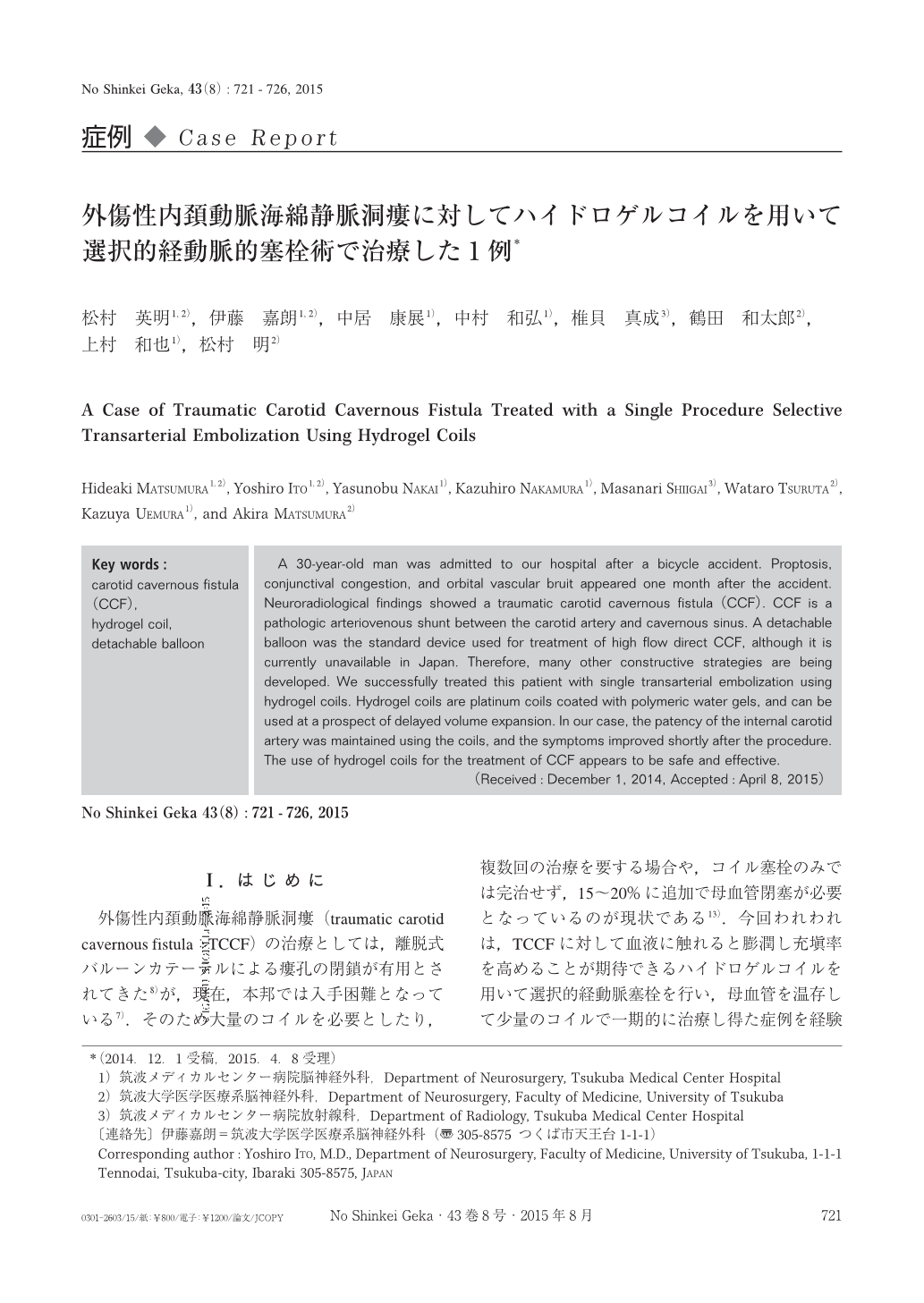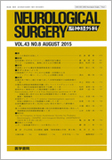Japanese
English
- 有料閲覧
- Abstract 文献概要
- 1ページ目 Look Inside
- 参考文献 Reference
Ⅰ.はじめに
外傷性内頚動脈海綿静脈洞瘻(traumatic carotid cavernous fistula:TCCF)の治療としては,離脱式バルーンカテーテルによる瘻孔の閉鎖が有用とされてきた8)が,現在,本邦では入手困難となっている7).そのため大量のコイルを必要としたり,複数回の治療を要する場合や,コイル塞栓のみでは完治せず,15〜20%に追加で母血管閉塞が必要となっているのが現状である13).今回われわれは,TCCFに対して血液に触れると膨潤し充塡率を高めることが期待できるハイドロゲルコイルを用いて選択的経動脈塞栓を行い,母血管を温存して少量のコイルで一期的に治療し得た症例を経験したので報告する.
A 30-year-old man was admitted to our hospital after a bicycle accident. Proptosis, conjunctival congestion, and orbital vascular bruit appeared one month after the accident. Neuroradiological findings showed a traumatic carotid cavernous fistula(CCF). CCF is a pathologic arteriovenous shunt between the carotid artery and cavernous sinus. A detachable balloon was the standard device used for treatment of high flow direct CCF, although it is currently unavailable in Japan. Therefore, many other constructive strategies are being developed. We successfully treated this patient with single transarterial embolization using hydrogel coils. Hydrogel coils are platinum coils coated with polymeric water gels, and can be used at a prospect of delayed volume expansion. In our case, the patency of the internal carotid artery was maintained using the coils, and the symptoms improved shortly after the procedure. The use of hydrogel coils for the treatment of CCF appears to be safe and effective.

Copyright © 2015, Igaku-Shoin Ltd. All rights reserved.


